
Dodge Viper – First generation (1991–1995)
The first generation of the Dodge Viper, also known as the SR I, was produced from 1991 to 1995. The Viper had a tubular steel frame with a fiberglass body. RT/10 Roadster was the only model available in the first generation. It featured a removable fabric roof and plastic side curtains instead of conventional windows. The early Vipers were very spartan, lacking amenities like air conditioning, exterior door handles, and side windows. These were added in later years.
A Short But Amazing History
For every generation there is one automobile which completely captures the imagination of driving enthusiasts, transforming the idea of transportation into the ideal of art. Names like Cunningham, Allard, Cobra and Testa Rossa come to mind – cars which combined blinding performance with exceptional form. Since its debut as a concept vehicle early in 1989, the Dodge Viper earned the reputation of the quintessential American sports car. Big-blocked, attention grabbing, fast, loud, untamed and uncompromising, the Viper stands out as a modern standard-bearer for pure American heritage and tradition.

Beginnings
It all began as a tiny spark in the minds of a few dedicated car enthusiasts at the former Chrysler Corporation, and quickly flamed into the shared passion of a group of like-minded individuals which came to be known as Team Viper.
Foremost in the minds of Team Viper’s first members was the idea that a truly legendary automobile could only be created by eliminating virtually all extraneous considerations.
The most important thing was to move one or two persons as quickly as possible and with as much raw performance as the driver could draw from a powerful engine and a responsive chassis.
Their specific performance benchmark was to accelerate from zero to 100 mph and to decelerate to zero again in less than 15 seconds. (Officially achieved with a United States Auto Club-sanctioned 0-100-0 run of 14.78 seconds in 1993.)
They believed Viper’s body should recapture the essence of classic sports car design in a truly modern idiom. It had to tightly encompass a hardware package that would include huge tires and wheels, a powerful V-10 engine and a simple, yet spacious two-seat interior.
Among the benchmarks: the Cunningham, a limited-production Chrysler Hemi®-powered race car that successfully competed head-to-head with the cream of Europe’s celebrated marques in the early 1950s.
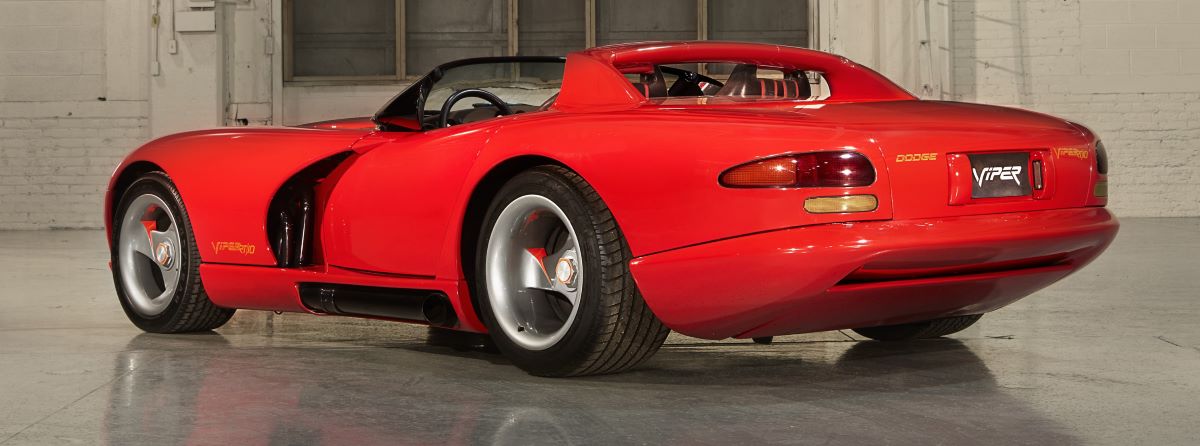
Star of the Show
With these ideas in mind, a one-of-a-kind Viper RT/10 show car was designed and engineered at Chrysler Corporation’s Advanced Styling Studio. It first appeared to the public on January 4, 1989 at the North American International Auto Show in Detroit, with the goal of testing public reaction to the concept of a back-to-basics, high-performance, limited-production sports car.
The reaction was overwhelming to say the least. Orders began to flow in even before the show was over. Chrysler Corporation immediately decided to determine the production feasibility of transforming the crowd-pleasing Viper RT/10 show car into a limited-production sports car in no more than three years.
In the months that followed, Team Viper conducted numerous meetings with potential suppliers, studied manufacturing techniques and analyzed various engineering approaches that would allow them to produce this unique roadster within a set timeframe and budget.
In May of 1990, the months of intensive study and testing culminated in the announcement by Chrysler Corporation that the V-10-powered Viper was a “go.” Now it became a matter of people utilizing computers and car-building smarts to find and develop the most efficient ways of doing things. Initial production of the Dodge Viper RT/10 was scheduled to begin in just 18 months.
Early Development
Once the initial idea had been accepted, the decision was made to develop the Viper RT/10 using a platform team concept. The result was an independent group which existed within Chrysler Corporation, establishing its own mission and creating its own supplier base.
The team leader sifted through scores of volunteers – Chrysler engineers, designers and managers – in search of a select few self-admitted car fanatics who would do whatever was necessary to create and produce a very special high-performance sports car.
Operating in its own highly secured area of a major corporate engineering center, Team Viper began three years of intensive, often around-the-clock operations. Their activities stretched from Italy – where the aluminum engine block was perfected – to the race tracks at Nelson Ledges and Road Atlanta – where they fine-tuned Viper RT/10’s unique high-performance chassis and powertrain.
Team members worked closely with major automotive suppliers to develop unique components for the Viper RT/10 which would not only withstand the tremendous stresses associated with high-performance driving, but also enhance Viper’s considerable performance capabilities.
Chassis prototypes, or “mules,” were developed to study vehicle dynamics. Within a year of Viper’s auto show appearance, a V-8-powered mule was being tested. A few months later, a stablemate powered by a cast iron V-10 joined the test fleet.
In May of 1990, after months of intensive study and testing, Chrysler Corporation announced that the Viper, now powered by the aluminum V-10 was a “go.”
In May of 1991, the Viper RT/10 performed as the official Pace Car of the 75th Indianapolis 500, further fanning the flames of public interest. Finally, in December of 1991, the first red Viper RT/10 production cars rolled off the New Mack Avenue assembly line – exactly three years after the concept car’s 1989 auto show triumph.
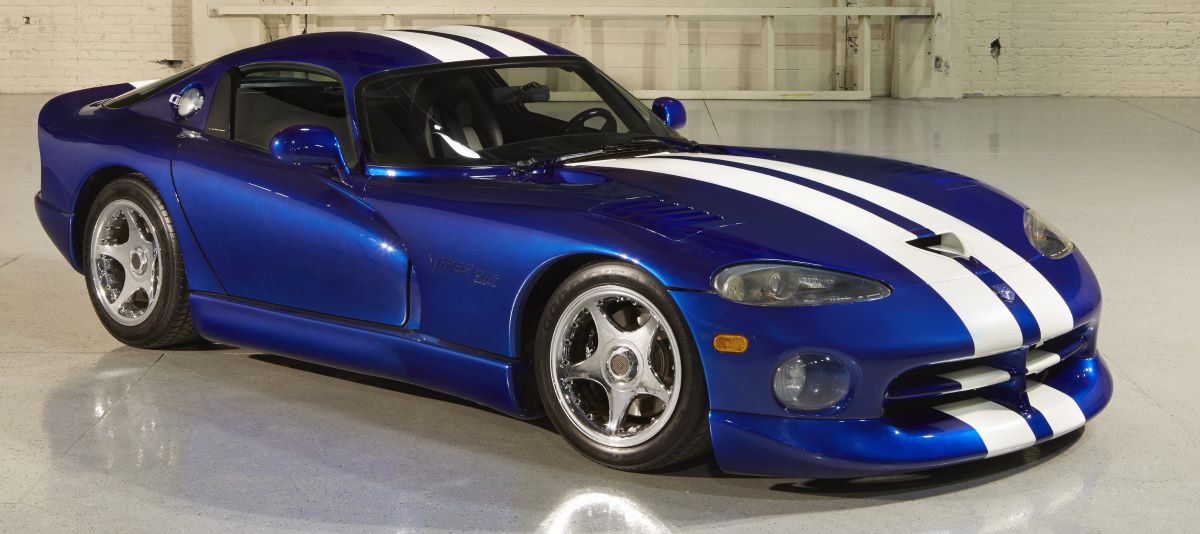
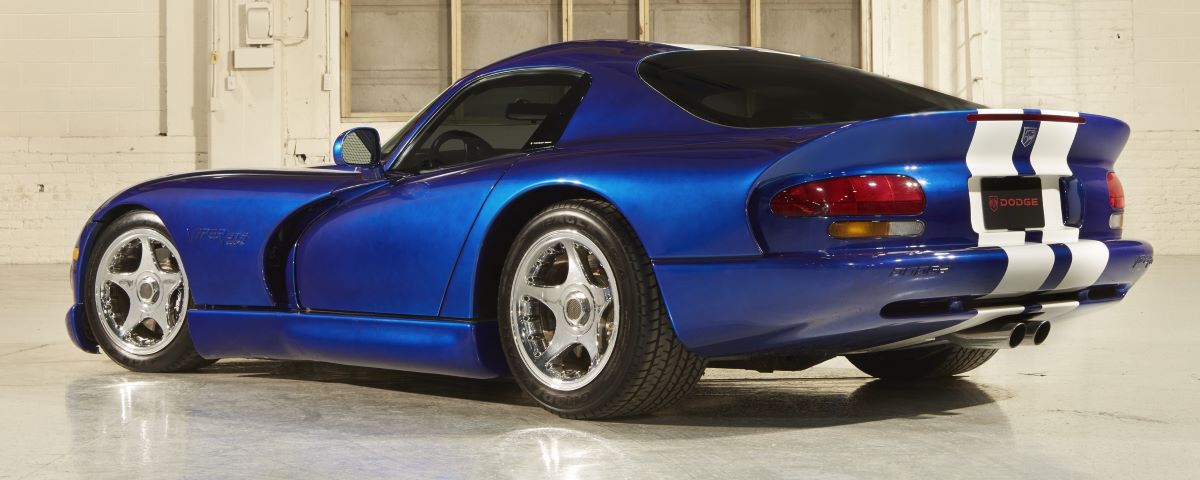
Continuing the Success
In January of 1992, a production version of the Dodge Viper was shown to the public at the North American International Auto Show in Detroit. In April that year, a prototype was donated to the Indianapolis Motor Speedway Hall of Fame Museum.
In 1993, black was offered as a second color option. “Tonight Show” host Jay Leno bought the first one. Bright yellow and emerald green were added to the mix in 1994.
Viper production moved in November 1995 to the Conner Avenue Assembly Plant, where it remains to this day.
The RT/10 was joined by the Viper GTS in 1996. Introduced to the public at the 1994 Detroit Auto Show, it was selected to pace the 1996 Indianapolis 500, with actual production beginning in that very same month – May.
Like the Dodge Viper RT/10, the Viper GTS Coupe teased enthusiast appetites well before getting an official green light to build.
In August 1995, Dodge displayed a blue with white striped GTS Coupe prototype at the second annual Dodge Viper Owner Invitational in Monterey, Calif., and made an exclusive offer to current owners – a voucher for the first GTS Coupes produced. More than three-quarters of the 1996 calendar year production of 1,700 was instantly spoken for.
The Roadster was designed for the aggressive, wind-in-the-hair driver. The GTS Coupe was given the same capacity to exhilarate the senses, but in a more refined manner. The goal was to do more than just add a roof to the Viper. The goal was to create the GTS in the mold of the world’s premier Grand Touring cars.
The GTS was seen as catering to a broader customer base than the RT/10, including professional people with an interest in performance cars as well as the pure enthusiasts that identify with the Roadster.
Planners wanted the Coupe to retain the agility of the Roadster in spite of added amenities of a roof and roll-up windows. To get the Coupe weight down to that of the original Roadster, the car went on a weight-reduction program.
While the GTS and the RT/10 look much alike, more than 90 percent of the Coupe was new. Every major part was subjected to scrutiny with telling effect: the GTS with air conditioning weighed nearly 100 pounds less than the 1994 RT/10 without air.
Significant changes, introduced on the 1996 Coupe and carried over to the Roadster, reduced weight by 200 pounds. These included an all-aluminum suspension system and re-engineered frame. Other weight reductions were distributed throughout the car. For GTS, weight reduction was focused in the engine and cooling system where more than 80 pounds were removed.
A total of 14,000 Vipers now cruise the world’s boulevards and racetracks, building a very strong and extremely enthusiastic owner core. Currently there are more than 3,600 members of the Viper Club of America affiliated with 40 Viper Clubs throughout the world, 33 of which are in the United States.
There are no other cars truly in the same class as the Dodge Viper GTS Coupe and RT/10 Roadster. And regardless of which model comes to mind, Viper remains true to its original mission: create the ultimate American sports car.
Overview
- Production Years: 1991–1995
- Body Style: 2-door roadster
- Engine: 8.0L V10 (488 cubic inches)
- Horsepower: Initially 400 hp, later increased to 415 hp
- Torque: 465 lb-ft
- Performance: 0-60 mph: Approximately 4.2 seconds / Top Speed: Around 165 mph
- Transmission: 6-speed manual (BorgWarner T-56)
- Layout: Front-engine, rear-wheel-drive
- Wheels and Tires: 17-inch aluminum wheels with wide performance tires.
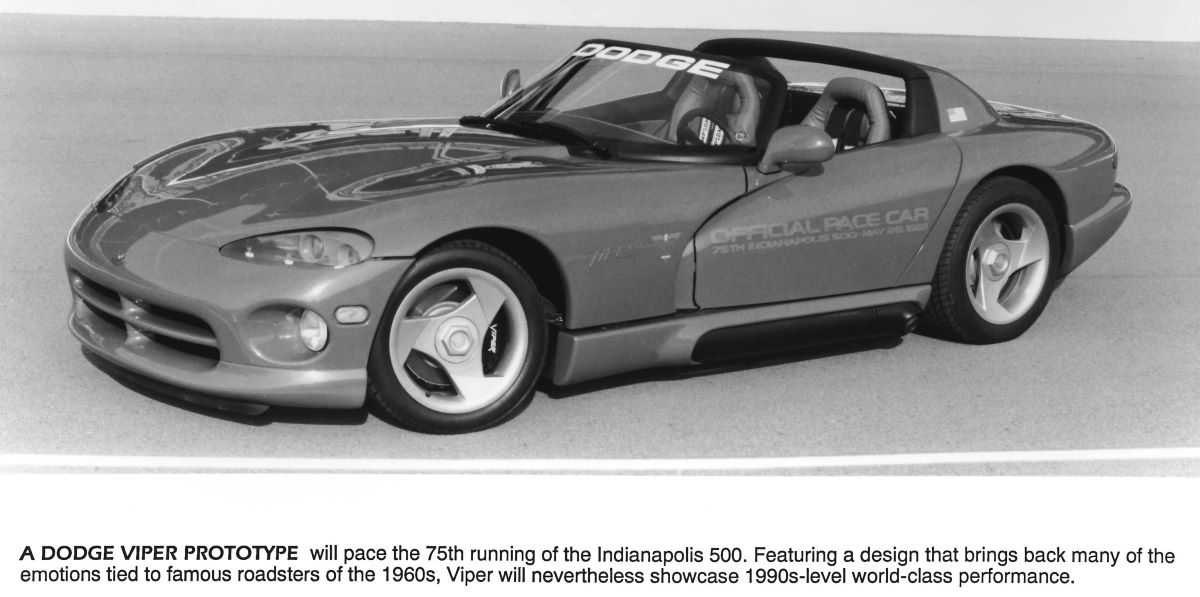
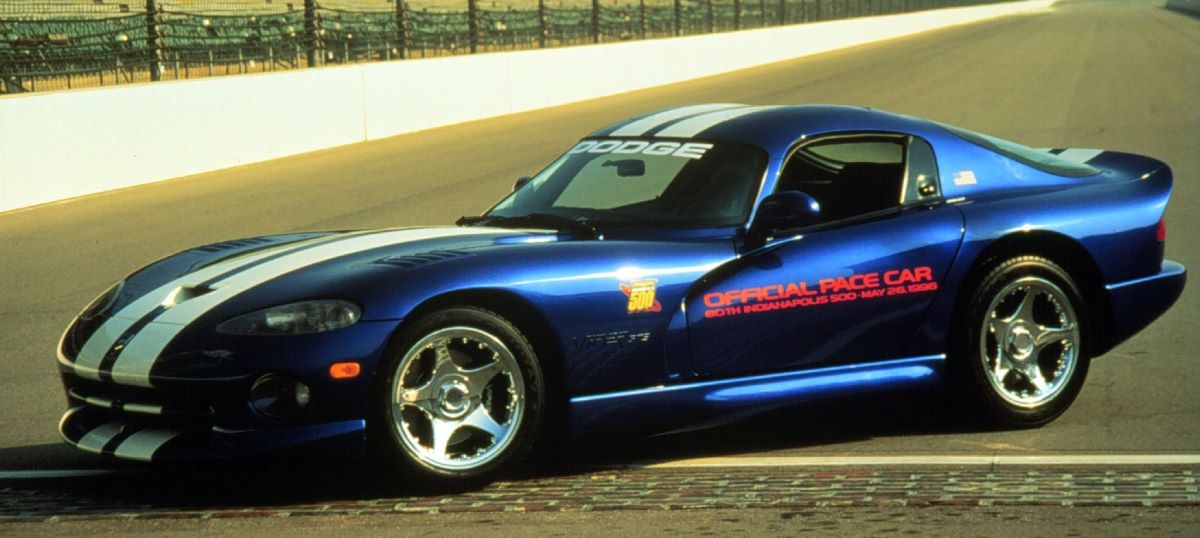

You must be logged in to post a comment.